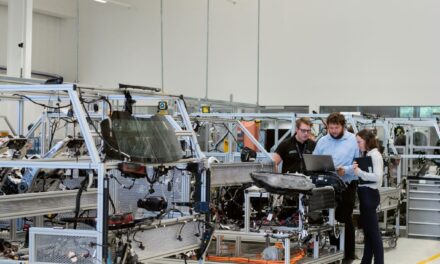 Mandatory marking of single-use plastic cups counter-productive and incompatible with closed-loop recycling
Mandatory marking of single-use plastic cups counter-productive and incompatible with closed-loop recycling
The EU countries have reached agreement on uniform regulations for single-use products. Certain products will be banned from the summer of 2021, while others will be subject to strict requirements. Manufacturers have criticised the new regulation, saying that the new marking requirement is incompatible with sustainable recycling concepts. The regulation is based on incorrect information and leads to costs that will place an excessive burden on producers and consumers.
In 2019, the European Union adopted landmark legislation on single-use plastic products: it requires all member countries to ban certain single-use plastic products and to aim to reduce consumption and achieve best possible reuse of others. The aim is to stop harmful effects on the environment and in particular the dramatic pollution of the oceans that is threatening the lives of marine animals. The German Bundestag and Bundesrat have both approved the regulation; it is due to come into force in Germany on 3 July 2021. From then on, there will be a ban on the ten most common disposable plastic products for which affordable alternatives made of more environmentally friendly materials are already on the market, such as cotton buds or drinking straws. Together, these products account for 70 per cent of marine litter in Europe.
Strict specifications for pictograms
In future, there should be reduced consumption and better recycling of products for which suitable alternatives are not yet available. In an ordinance on the nature and marking of certain disposable plastic products the German Federal Government has regulated how this is to be achieved. Among other things, it obliges manufacturers to apply uniform EU-wide wording to disposable beverage cups. Depending on whether the cups are made partly or entirely of plastic, they must carry the wording ‘PLASTIC IN PRODUCT’ in white letters on a black background or ‘MANUFACTURED FROM PLASTIC’ in black letters on a white background. The marking must be engraved or printed and must also contain two pictograms: these should make it clear to the user that they should dispose of the cup properly and thus avoid polluting the environment.
Growth in recycling of single-use products
It seems to be questionable, however, whether having this information on disposable beverage cups will be good for the environment: manufacturers are criticising the required marking because it will make proven forms of recycling impossible. Currently, 53 per cent of the plastic waste generated in Germany is recycled energetically, in other words, it is incinerated. Only 45 per cent is subject to material recycling, i.e. ground into granulate, with the resulting recyclate then being processed into various plastic products. A recent survey shows that the use of recyclate as a raw material for new plastic products is increasing: in 2019, the total amount of recyclate used in Germany was more than 1.9 million tonnes, which is 10.2 per cent more than in 2017.
Marking incompatible with closed-loop recycling
The use of recyclate in closed product loops is particularly sustainable. Unlike in open loops, where processing of the recyclate is usually incomplete and it is often made into products other than the original ones, in closed-loop recycling new ‘disposable’ cups are made time and again from original ‘disposable’ cups. Manufacturers are complaining that the new marking requirement will make closed-loop recycling of transparent beverage cups more difficult: this is because printing ink results in the recyclate becoming cloudy and prevents it from being processed into new transparent cups.
The required marking also poses another problem: food must not come into direct contact with the print, so that no harmful substances from the printing ink are transferred to the food. Migration of printing ink must be prevented; this also applies to beverage cups.
Significant costs for manufacturers
There are no absolute figures on how many disposable plastic cups are produced in Germany each year. Based on the annual report of Plastics Europe and a study on waste generation commissioned by NABU, the German Federal Statistical Office estimates that around 620 million cups are produced annually. One fifth of these already contain various information that can be added to with little effort during the course of the marking process. The remaining four-fifths, i.e. almost 500 million cups a year, will now need to be printed. This means a considerable amount of effort for the 44 companies that produce cups in Germany. The Federal Statistical Office puts the total one-off costs for the acquisition and programming of printing machines at about 470,000 euros for all 44 producers in Germany. This cost calculation assumes a one-off investment in a new press of 10,000 euros for each manufacturer in Germany. According to industry representatives, this is a false estimation. They consider the assumption, which is based on information from environmental associations rather than from economic experts, to be unrealistic and are expecting expenditure to be much higher. Just for the machine alone, each company will have to invest at least 300,000 euros. In addition, there will be costs to revise the design of differently shaped cups and to provide them with information in the respective national language of the various EU countries. This represents a large delta to the costs on which the regulation is based.





